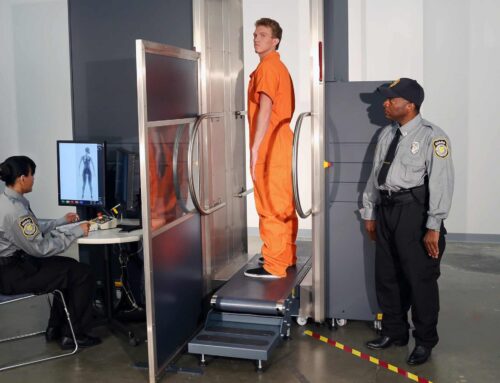A cell phone detector is a device that detects the existence and presence of mobile phones within a delimitated range of operation. Once the cell phone detector detects the presence of a mobile phone, an alarm is set off. Cell phone detectors offer different ways of alerting the user to the presence of a mobile phone – either through a ringtone, a beep or through an alert message. But how do cell phone detectors work?
Cell phone detectors are not only meant to discover devices that are in use, but also phones that are switched off or in airplane mode – but this ultimately depends on the technology the cell phone detector uses: RF detection or Ferromagnetic detection.
Radio Frequency Mobile Phone Detectors
RF cell phone detection picks up all communication between the cell phone itself and an adjacent tower. If the phone is not in airplane mode or switched off, it will transmit data to the tower even if it’s not on a call. When transmitting data or engaged in a call, the phone’s signal can be easily picked up by the radio frequency phone detector.
Advantages of RF phone detectors:
- They are generally smaller and easy to conceal.
- They have a long range.
- Instant detection – the RF detector can pick up the device immediately after it begins transmitting.
Disadvantages of RF phone detectors:
- Unable to detect phones that are in airplane mode, powered off or not transmitting.
- Unable to detect disassembled phone parts – In correctional facilities, phones may be smuggled in disassembled and reassembled once inside.
Ferromagnetic Cell Phone Detectors
These detectors locate cell phones by detecting the ferromagnetic components all phones use. They do not rely on radio waves and are ideal for finding devices that are not in use.
Ferromagnetic mobile phone detectors work by detecting the components all phones use. These devices are the best solution for finding phones that are not in use and even cell phone components.
Advantages of Ferromagnetic Mobile Phone Detectors:
- Can detect mobile phones that are in airplane mode or switched off.
- Can detect mobile phone parts such as speakers and main boards.
- Can find and detect mobile phones that are concealed under clothing, in bags or inside the human body.
Disadvantages of Ferromagnetic Mobile Phone Detectors:
- These detectors have a very short area of effectiveness – the maximum range is only 1-2 feet.
How does a cell phone detector work?
Both RF and Ferromagnetic detectors are extremely useful security tools – RF detectors can cover large areas and scan large groups of people while Ferromagnetic detectors are the ideal choice to find hidden and contraband cell phones within packages, bags and even humans.
Use of Cell Phone Detectors
Cell phone detectors are mainly used for security and Technical Surveillance Counter Measures applications. With the illegal use of mobile phones constantly growing, cell phone detectors for prisons are the perfect deterrent for inmates. Point Security, Inc. has more than thirty years of experience providing security equipment for airports, checkpoints and governmental buildings throughout the United States and Caribbean. Contact us today for a free quote!






